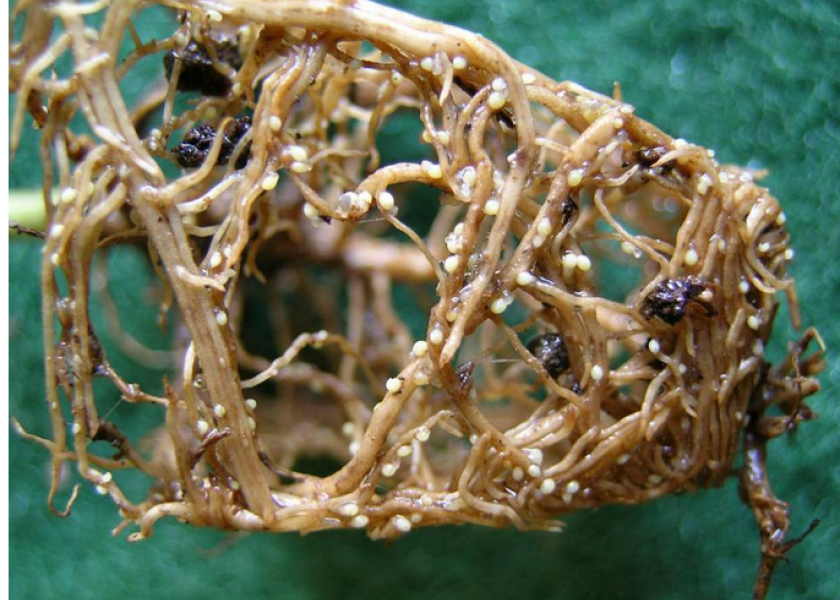SCN Makes Planting Beans after Beans Financially Questionable

Of the 88 million soybean acres USDA currently predicts farmers will plant in 2022, Greg Tylka is concerned a significant number of those will be in fields that were planted to soybeans last year.
He bases that prediction on two factors: 1) the high cost and lack of availability of corn inputs 2) strong soybean prices, which will make growing them more attractive to farmers.
“It’s bad news – growing soybeans back-to-back is not a good idea and SCN makes it that much worse,” says Tylka, Extension nematologist and professor at Iowa State University and director of the Iowa Soybean Research Center.
“Possible yield losses to SCN can be 30, 40, 50 percent and even more,” he says.
SCN is also the gateway to more yield loss. Sudden death syndrome (SDS) and brown stem rot (BSR) are part of the troublesome trio associated with SCN, which also paves the way for other fungal root rots in soybeans.
Along with those issues, farmers typically pay a yield penalty with back-to-back soybeans. Tylka cites four different studies in Minnesota and Wisconsin which show a yield decline of at least 5 percent and as much as 9 percent for second-year soybeans compared to first-year beans. A study in North Carolina shows a 5-bushel-per-acre penalty for second-year soybeans.
High Egg Counts
Tylka says SCN egg counts in Iowa fields were at high levels post-season last fall, leading him to believe the pest could impact soybean crops significantly in 2022 – especially those planted in fields back-to-back.
In southeast Iowa research fields, he reports “end-of-season SCN egg-population densities ranged from less than 5,000 eggs for some varieties (a moderate infestation) to nearly 39,000 eggs per 100 cm3 of soil for others (a very high level of infestation).”
The chart below shows the average yield and end-of-season SCN population density for the 69 resistant varieties studied in the Iowa experiment.
The outlook for hot, dry weather conditions in many soybean growing areas coupled with the breakdown of SCN-resistant technology in current varieties adds to Tylka’s sense of urgency.
“Our SCN-resistant varieties are failing, and the problem gets worse every year,” he says.
Be Proactive
Tylka advises farmers to take soil samples late this winter or in early spring to get an idea of SCN egg-population levels in fields prior to planting soybeans and plan accordingly.
“Be aware that in the north you also have to be careful about growing edible beans, because they can be a host for SCN,” he cautions.
Second, when planting soybeans after soybeans, use a variety in 2022 that carries a different source of SCN resistance than the variety planted in 2021. Research shows this practice helps delay resistance development.
Third, use a nematode-protectant seed treatment. “There are many different suppliers and modes of action that can work, there’s not a single one that we turn to,” Tylka says. “Seed treatment is a good way to bolster SCN-resistant varieties.”
Tips for Back-to-Back Soybean Production
Soybean Shift: Tips to Plant Early Soybeans









